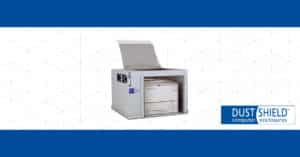
When searching for an enclosure to protect their equipment, organizations can choose between hard- and soft-sided accessory enclosures.
It might be tempting for an organization to focus on the price differences between the two (soft enclosure solutions are almost always going to be cheaper). But, there are a number of other factors to consider, especially as these enclosures are meant to protect valuable electronic equipment from area hazards.
Let’s take a look at a few of the main issues organizations should consider when deciding between solid and soft accessory enclosures.
Air Flow
Air flowing throughout the enclosure and machine helps keep the electronics from overheating. When designing solid enclosures, manufacturers can strategically place a fan system to maximize that interior air flow to provide plenty of cooling power for the machine. This also helps ensure that air only enters through the chosen opening, which will ideally be filtered to prevent particulates from clogging the machine.
On the other hand, soft enclosures are essentially bags that can be fitted around an electronic unit. They don’t have solid walls, and therefore no way to seal in a fan and filtration unit. The only air flow will be via openings for cords, printer ports, etc. With no forced air, the air flow will be minimal. Plus, no fan means no filter to stop airborne particulates from getting into the machine and gumming up the works.
Some soft-sided enclosures might have flaps that can be closed over the necessary openings, but that won’t help when the machine is in use.
Organizations should be careful when considering soft-sided enclosures. If the enclosure fits too close to the machine and restricts air flow into the machine too much, it can actually cause the machine to overheat.
Filtration System
As mentioned previously, it is functionally not possible for a soft-sided enclosure to have an effective filtration system. Some organizations try to make up for that fact by manufacturing the majority of the actual enclosure out of a filter-type material. While this might do an okay job of stopping particulates from entering via the sides, there is still nothing that will stop particulate entry at the necessary paper and cord ports. Plus, the filter part of the cover will eventually become clogged with debris and will either have to be washed or replaced.
With a quality hard-sided enclosure, organizations will have a filtration system with a removable filter. This allows the organization to remove and wash or replace the filters as they become clogged and impede airflow.
DustShield uses removable filters that stop particulates as small as .1 micron.
Impact Protection
If an organization is deploying a piece of equipment, e.g., printer, scanner, workstation, to an area where there’s a risk that something can get dropped on it, it would be beneficial if the enclosure provided impact protection.
Soft-sided enclosures offer no impact protection whatsoever. A quality hard-sided enclosure will provide some level of impact protection, though. How much will depend on the individual enclosure and should be discussed upfront when customizing an enclosure with a sales consultant.
If an organization is considering an enclosure, they should discuss how well the solution will allow air to flow through the equipment to cool it, how the enclosure will protect the equipment from airborne particulates and whether they need impact protection or not. Not discussing these could result in an organization getting a subpar enclosure that needs to be replaced sooner than expected. Worse, it could also result in damage to the organization’s valuable machines.
DustShield has 30 years of experience building custom enclosure solutions that filter out airborne particulates while providing plentiful air pressure and impact protection. To learn more, contact our enclosure specialists at 417.736.3746 or sales1@amprod.us.

